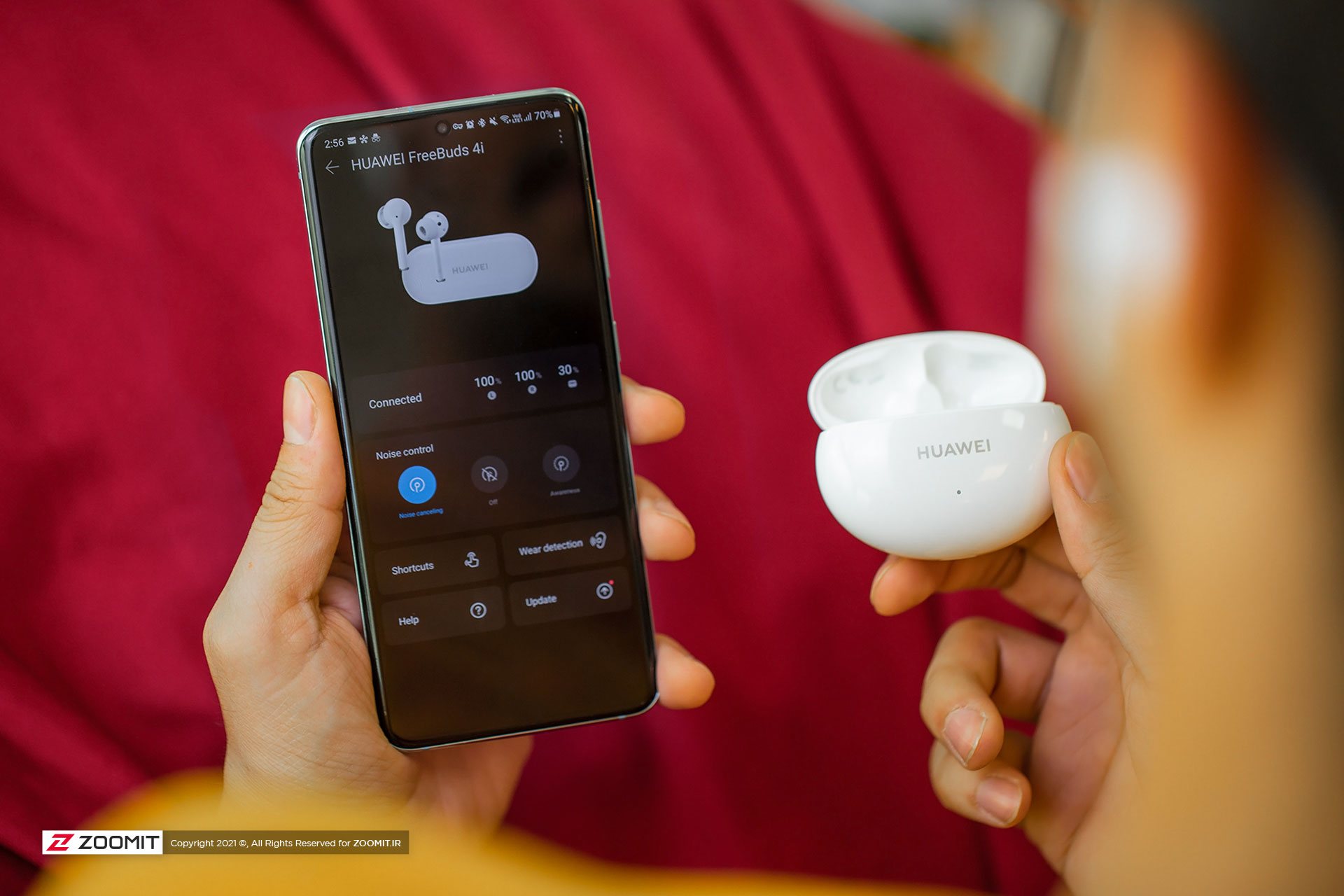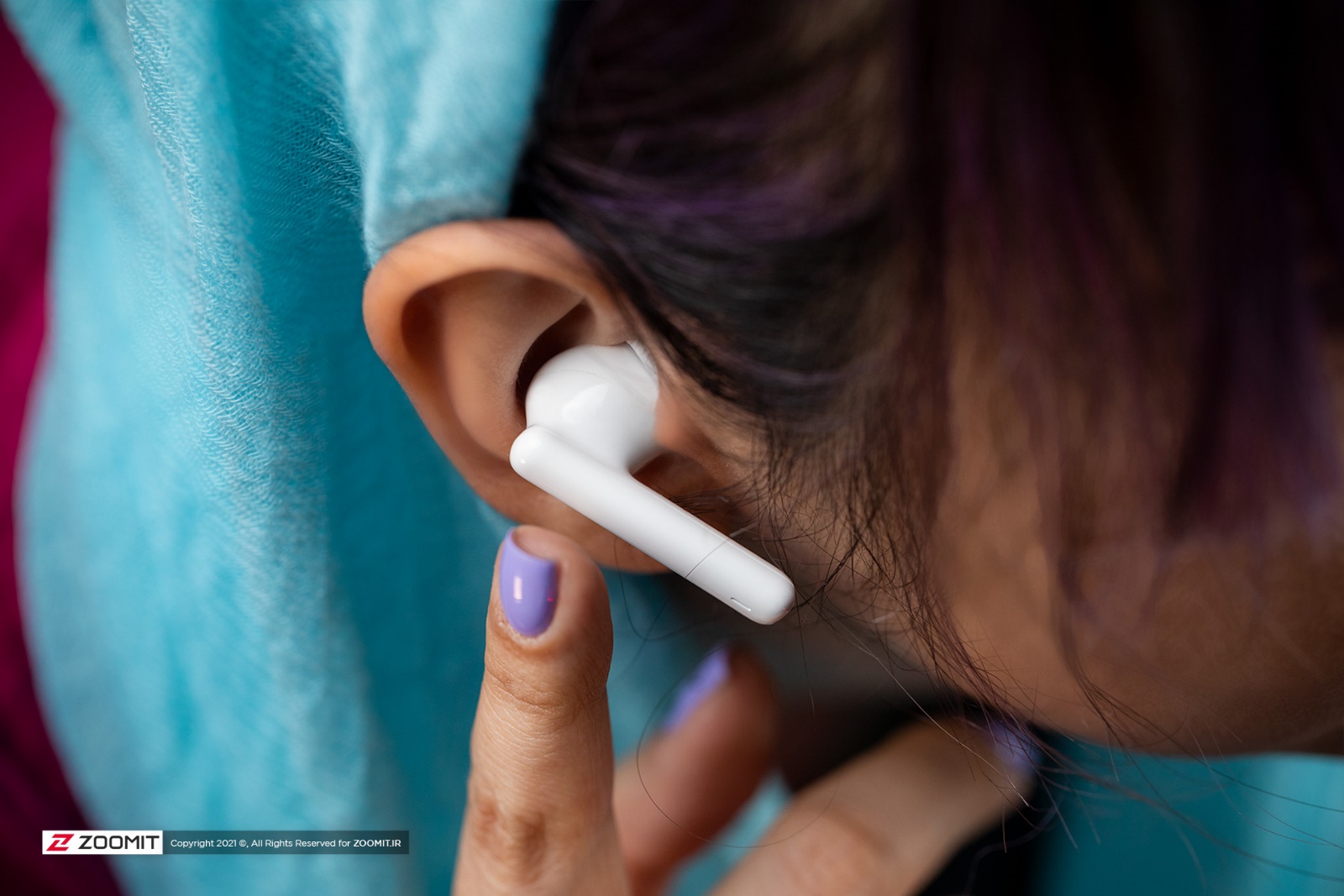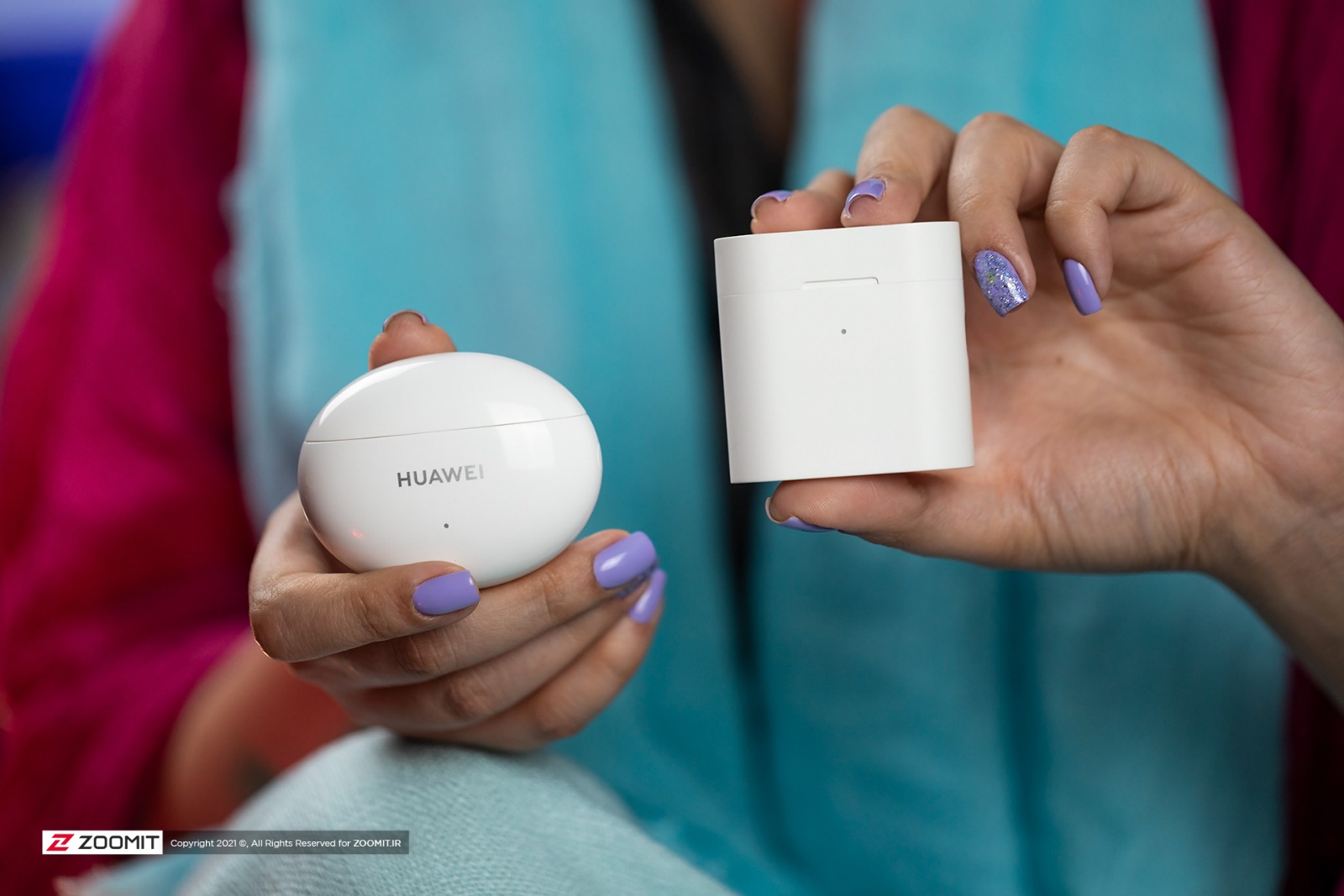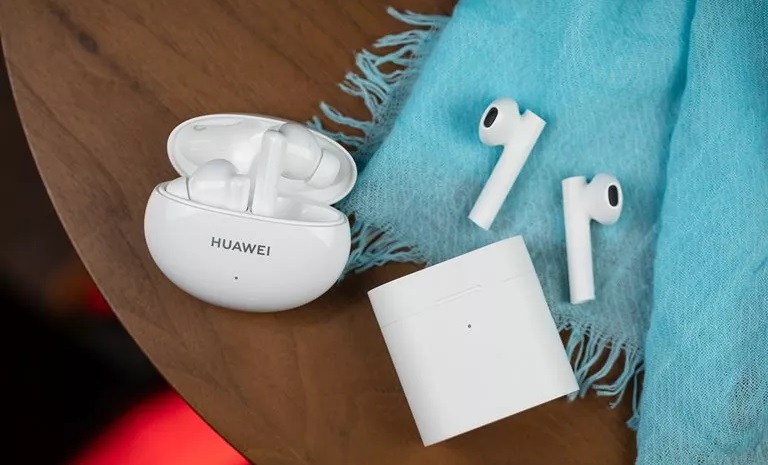Huawei Freebuds 4i Vs. Xiaomi Mi Air 2S; What Are The Best Wireless Headphones?
In The Competition Between Xiaomi Mi Air 2s And Huawei Freebuds 4i, Two Of The Most Popular Wireless Airbags In The Market With A Price Of Fewer Than 2 Million Tomans, Which One Can Win The Field?
Huawei Freebuds 4i Vs. Xiaomi Mi Air 2S, Freebuds Pro, Huawei’s Flagship Fully Wireless Headphones, Has Attracted A Lot Of Positive Feedback From Users And Experts. Still, The High Price Tag Removed It From The Shopping List Of Many Users.
With that in mind, the Chinese launched the FreeBuds 4i with most of its flagship headphones and a 50% cheaper price.
Huawei Freebuds 4i Vs. Xiaomi Mi Air 2S
| Comparison | Huawei Free Winds 4i | Xiaomi AirDots Pro 2s | |||
|---|---|---|---|---|---|
| General specifications | |||||
| Another name | Xiaomi Mi Air2s | ||||
| Type of headphones | In the ear (In-Ear) | In the ear (In-Ear) | |||
| Acoustic type | Closed-Back | Closed-Back | |||
| Connection type | wireless | wireless | |||
| Type of wireless headphones | True Wireless (the wireless connection between two phones with each other and the source) | True Wireless (the wireless connection between two phones with each other and the source) | |||
| Technical Specifications | |||||
| Driver diameter | 10 mm | 14.2 mm | |||
| Impedance | 32 ohms | ||||
| Response frequency range | 20-20000 Hz | 20-20000 Hz | |||
| Active noise-canceling or ANC | |||||
| Description Noise removal | Eliminate active noise up to 22 decibels | ||||
| Microphone | |||||
| Microphone description | Dual microphone | Dual microphone | |||
| Remove microphone noise | |||||
| Other technical specifications | Use of a polymeric diaphragm | ||||
| Connections and facilities | |||||
| Bluetooth | 5.2 | ||||
| Charging method | Through the charging compartment with USB Type-C port | Through the charging compartment with USB Type-C port | |||
| Battery type | – Lithium polymer with a capacity of 55 mAh (airbag) – Lithium polymer with a capacity of 215 mAh (charging chamber) | – Lithium-ion – Headphone battery with a capacity of 44 mAh – Charging chamber battery with a capacity of 410 mAh | |||
| Charging | – Maximum 10 hours audio playback mode (noise cancellation off) (up to 22 hours with charging compartment) – Maximum 7.5 hours audio playback mode (noise cancellation on) – up to 6.5 hours talk mode (noise-canceling off) – up to 5.5 hours Conversation mode (noise cancellation on) | Up to 5 hours of audio playback mode | |||
| Time required to charge | About 1 hour | About 1 hour | |||
| win | 10 meters | ||||
| Water and moisture resistance | IP54 (resistant to dust and water spray) | IPX5 (resistant to direct water spray) | |||
| Software features | Dedicated AI Life application for adjusting and personalizing sound | ||||
| Supported codecs and profiles | – Support for A2DP, AVRCP, HFP, HSP, SPP profiles – Support for AAC, SBC formats | – Support for A2DP, AVRCP, HFP, HSP, BLE profiles – Support for SBC, AAC, LHDC formats | |||
| Voice and conversation controller | |||||
| Controller description | – Touch control and tap the airbag to change the content being played, connect and disconnect – Long touch on the airbag to enable and disable noise cancellation | Change the content being played and the conversation and control the voice assistant. | |||
| Charging indicator | |||||
| Other | – Awareness mode to hear the ambient sound while playing content – Headphone status sensor on the ear with the ability to automatically stop the music – Gaming Mode to reduce sound delay – Ability to use 240 minutes with only 10 minutes of charge – Quickstart on Huawei phones with interface User EMUI10 and above – Ergonomic design | Compatible with Qi wireless charging | |||
| Physical characteristics | |||||
| Weight | – 5.5 g (per airbag) – 36.5 g (charging chamber) | 9 grams | |||
| Dimensions | – 21 × 23.9 × 37.5 mm (airbag) – 27.5 × 48 × 61.8 mm (charging compartment) | ||||
| Color | Black, white, red | White | |||
| Mobile items | – Charging compartment – USB cable type C – Airbag with different sizes – Manual | – Type C USB cable – Manual – Charging compartment | |||
At the other end of the spectrum is Xiaomi’s all-wireless Mi headphone, touted as an improved version of the Mi Air 2. Despite maintaining the original model’s original design and sound quality, it experiences battery life and latency improvements. Xiaomi headphones are very similar to Apple’s previous-generation AirPods and, therefore, can be an option for those who like such a design.
Design and ergonomics
The first thing that may weigh the scales a bit towards the Air 2S is that it weighs less (4.5 grams per phone) compared to the FreeBuds 4i (5.5 per phone); Of course, unlike the Xiaomi headphones, the FreeBuds 4i uses silicone series to fit more easily in the ear, to prevent some environmental noise from entering the ear, and to bring a more comfortable exercise experience. This is not the case with the Air 2S and will probably be overlooked during exercise (other than walking).

Xiaomi Air 2S Fully Wireless Headphones do not receive special certification for liquid resistance; While the FreeBads 4i certified IP54 headphones are liquid-resistant on paper, they are a better choice for listening to music while walking in the rain.
Setup and capabilities
Huawei FreeBads 4i uses Bluetooth 5.2 to connect to a smartphone, while Xiaomi Air 2S headphones use Bluetooth 5.0. The two protocols are no different in terms of data transmission bandwidth; But version 5.2 offers other advantages, such as connecting multiple headphones to a smartphone. The process of connecting the FreeBuds 4i to Huawei and Air 2S to Xiaomi phones is straightforward, just by opening the headphone case; While on other phones, you have to pair them manually.
Air 2S offers the ability to play or pause music when removing one or both phones on all smartphones, But the FreeBuds 4i headphones only give you the ability to connect it to one of the Huawei smartphones. FreeBuds 4i supports only two basic touch commands by default; While the Air 2S touch controls are more varied.

One of the most important features of the FreeBads 4i that pushes it ahead of the Air 2S is the Active Noise Removal (ANC) system. FreeBuds 4i uses two microphones in each ear to eliminate noise; It can be said that in this price range, there are fewer headphones that can have such a function in terms of removing ambient noise. The Air 2S, on the other hand, uses an ambient noise canceling (ENC) system, which performs much worse than the Freibad 4i; Naturally, FreeBuds 4i itself is not at the same level as the more expensive products in terms of eliminating environmental noise.
Huawei’s ANC headphone technology also shows its usability during calls; So that even in crowded environments, the other party’s voice can hear well. The noise-canceling system also filters out surrounding sounds so that the user’s voice can hear more clearly and clearly. On the other hand, the conversation experience with Air 2S is also satisfying.
Music experience
FreeBads 4i uses 10mm drivers, and Air 2S uses 14.2mm drives. FreeBuds 4i headphones support SBC and AAC codecs; While Xiaomi’s fully wireless headphones are compatible with LHDC codecs in addition to these codecs, along with LDAC, they are the only codecs that have received Hi-Res Audio Wireless certification.

To compare the sound quality of the FreeBuds 4i and Air 2S, we connected them to the Xiaomi Mi 11i smartphone and streamed music from Spotify. In our experience, the FreeBuds 4i headphones were much louder and produced lower frequencies with more beats; These headphones also listen to high frequencies with better resolution. In the production of mid-frequency sounds, such as people’s voices, the two headphones performed closely.
Charging
In terms of battery, Huawei’s fully wireless headphones perform slightly better than Xiaomi’s. If the FreeBads 4i ANC feature is disabled, it can use for 6 to 7 consecutive hours; But that’s five hours for the Air 2s.

All in all, the Huawei Free Buds 4i is a better option than the Mi Air 2S in its price range. If things like active noise cancellation are important to you, you’re interested in loud sounds and wireless headphones for daily exercise. Don’t worry about getting it out of your ear, and the Huawei FreeBi 4i could be a better option for you; Of course, if you want to pay the price difference of about 25% Free Air 4s compared to Air 2S.













